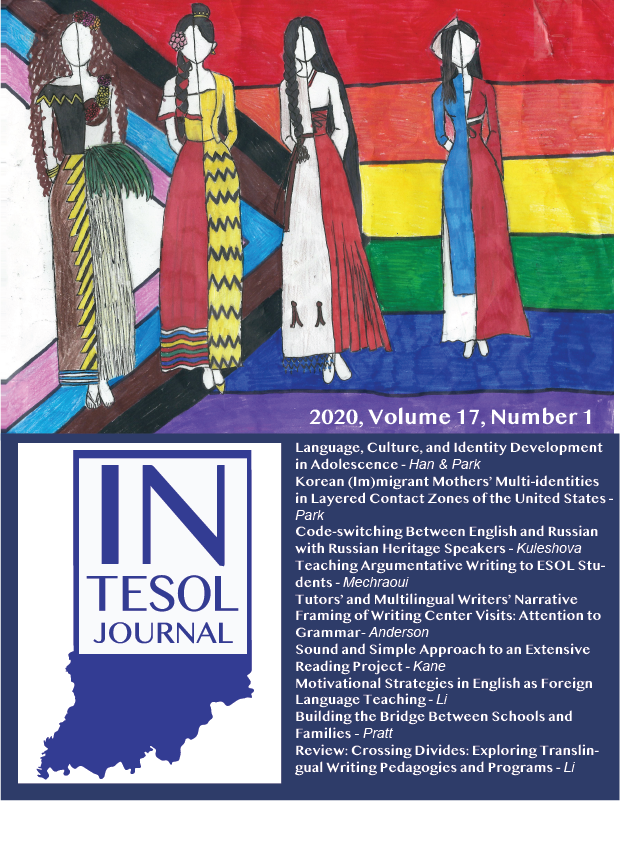Sound and Simple Approach to an Extensive Reading Project
DOI:
https://doi.org/10.18060/24421Keywords:
Reading, Extensive Reading, Classroom Practice, Intensive EnglishAbstract
The evidence is undeniable that extensive reading (ER) improves reading comprehension, vocabulary, and motivation. Nevertheless, ER is often neglected in ESL classrooms. In order to introduce ER to more ESL teachers’ repertoires, this article will present a developed, principled, and practical ER project suitable for almost any classroom teaching situation. Readers will gain an overview of the literature surrounding ER and be provided with practical ideas, resources, rubrics, activity descriptions, and examples from the author’s personal practice of ways to implement an ER project in their institutions and classrooms.
References
Bamford, J., & Day, R. R. (Eds.). (2004). Extensive reading activities for teaching language. Cambridge University Press.
Day, R. R., & Bamford, J. (1998). Extensive reading in the second language classroom. Cambridge University Press. https://doi.org/10.1177/003368829802900211
Fenton-Smith, B. (2010). A debate on the desired effects of output activities for extensive reading. In B. Tomlinson & H. Masuhara (Eds.), Research for materials development in language learning: evidence for best practice (pp. 50–61). https://doi.org/10.5040/9781474211949.ch-004
Grabe, W. (2008). Reading in a second language: moving from theory to practice. Cambridge University Press. https://doi.org/10.1017/CBO9781139150484.002
Hill, D. R. (2013). Graded readers. ELT Journal, 67(1), 85–125. https://doi.org/10.1093/elt/ccs067
Helgeson, M. (2005). Extensive reading reports – different intelligences, different levels of processing. Asian EFL Journal, 7(3), 25-33.
Krashen, S. (2003). Explorations in Language Acquisition and Use. Heinemann.
Jacobs, G. M. (2014). Selecting extensive reading materials. Beyond Words, 2(1), 116-131.
Jacobs, G. M. & Renandya, W. A. (2014). Making extensive reading even more student centered. Indonesian Journal of Applied Linguistics, pp. 102-112 https://doi.org/10.17509/ijal.v4i2.691
Nation, P. (2015). Principles guiding vocabulary learning through extensive reading. Reading in a Foreign Language, 27(1), 136–145. https://doi.org/10.26686/wgtn.12543404
Stoller, F. L. (2015). Viewing extensive reading from different vantage points. Reading in a Foreign Language, 27(1), 152–159.
Suk, N. (2017). The Effects of extensive reading on reading comprehension, reading rate, and vocabulary acquisition. Reading Research Quarterly, 52(1), 73–89. https://doi.org/10.1002/rrq.152
Waring, R. (2007). Bringing extensive reading into oral communication classes. The Language Teacher, 31(7), 38-9.
Downloads
Published
Issue
Section
License
Copyright (c) 2020 Sarah Kane

This work is licensed under a Creative Commons Attribution-NonCommercial 4.0 International License.


